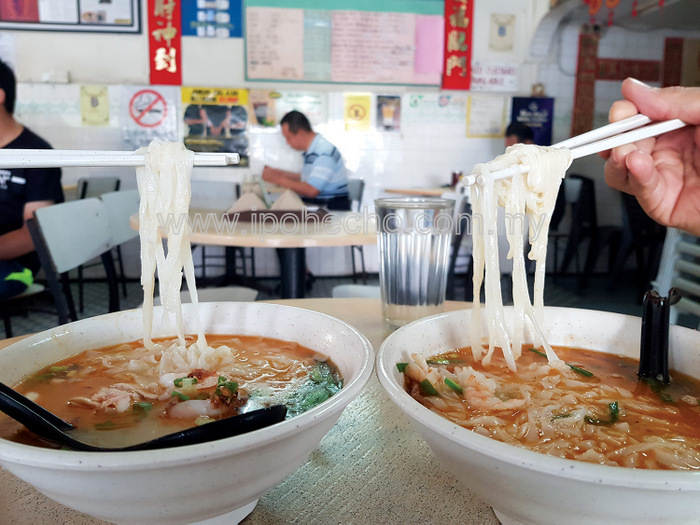Cover Story: What Makes Ipoh Kueh Teow So Special
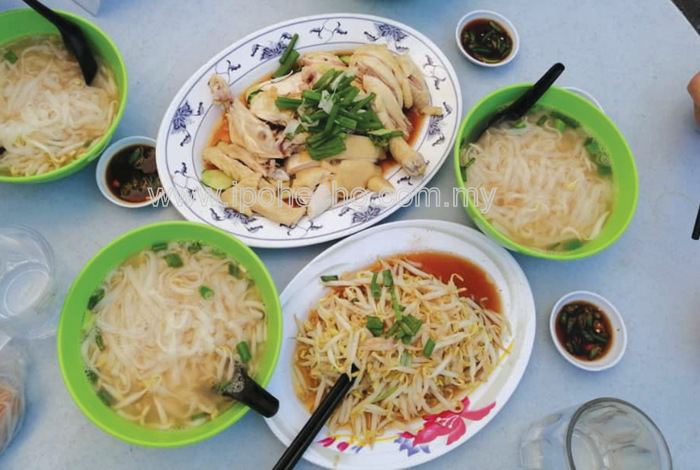

By Chris Teh
Ipoh has long been acknowledged to be the home of flat white noodles, more commonly known as hor fun in Cantonese or kway teow or spelt kueh teow in Hokkien. Flat rice noodles are also known as da fen in Sabah which means wide vermicelli. To dive deeper into how Ipoh kueh teow has garnered a reputation far and wide as being the best of its type of rice noodle, sought by foodies from all over Asia, Ipoh Echo went in search to uncover the source of its renown and why people flock to Ipoh to taste our inimitable “Kai Si Hor Fun” whether for breakfast, lunch, or dinner.
The Water, the Process and the Labour


This scribe spoke to the head of Ipoh’s largest manufacturer of Ipoh Kueh Teow, Mecanique Ng Chun Nun, owner of Ipoh Kueh Teow and Noodles Sdn Bhd, also known as IKT, to discover all about kueh teow (please note that we will refer to the noodles as kueh teow which is more commonly used).
History
Founded by Ng Lim Fah in 1959, IKT started operations in a wee shack of their wooden house in Pasir Puteh.
According to Mecanique, son of Lim Fah, which is part of the second generation of the Ngs and the current owner of IKT, the primitive period of business was definitely not an easy one.
“It was a hassle to produce kueh teow back then. We only had steaming woks with a large, round flat plate in the middle and firewood under the woks which boiled water to steam.
“To produce kueh teow, the rice solution was poured onto the flat plate, while waiting for it to shape inside the steam on top of slowly burning firewood. The more rice solution was poured, the thicker the kueh teow would be.
“Machines back then were rather unreliable and kueh teow were mostly handmade. Thus, daily productions were very low and quality was something out of our control,” he said.
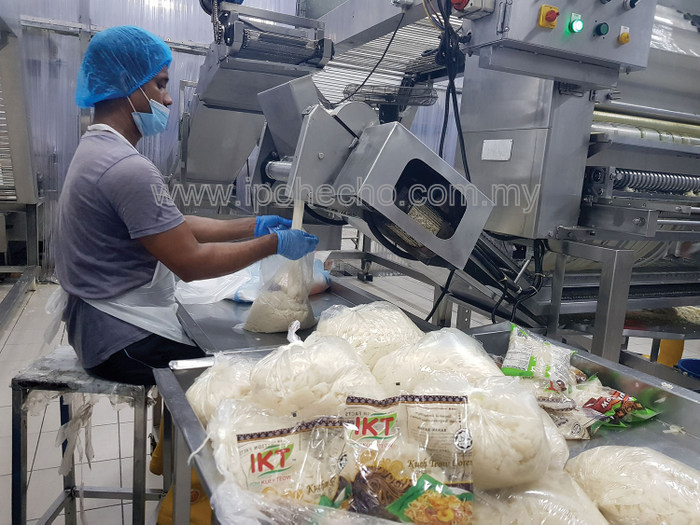

Mechanisation
Towards the end of the 90s, proper machinery were introduced and production became semi-automated, greatly increasing the amount of daily production.
Now operating under Mecanique’s supervision and the third generation of the Ngs, IKT prioritizes domestic delivery of their products to the whole western peninsula of Malaysia, like Ipoh itself, other parts of Perak, Penang and Kuala Lumpur.
In the future, Mecanique is not opposed to the idea of expanding their business internationally.
“We are just in the beginning of discussions of international deliveries. Nothing is confirmed yet, but I think ahead and positively,” he said.
Other noodles also produced by the company include yellow mee, lai fun (thick rice noodles) and low she fun (rice pin noodles).
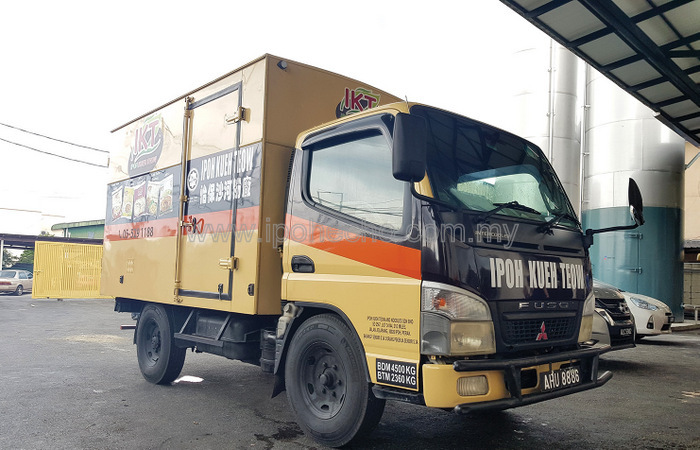

Production of Kueh Teow
The whole process of making kueh teow takes approximately one and a half days, according to Mecanique.
“The hassle of producing kueh teow is the preparation of raw materials, but cooking the kueh teow to ready-made shape takes less than 10 minutes,” he said.
With possession of higher knowledge and research breakthroughs from the third generation, most production processes are now fully automated.
According to Mecanique, IKT reaches peak production periods during major festivals like Chinese New Year, Hari Raya Aidilfitri, and Hari Raya Haji.
Their kueh teow is certified ‘halal’ for consumption.
“We use all-natural ingredients for our kueh teow with no additional preservatives, which is why we strongly suggest that they be consumed within 2 to 3 days,” mentioned Mecanique.
IKT uses premium grade rice for their kueh teow to ensure that the aroma of rice is highlighted. Firstly, raw rice, which is the basic ingredient to kueh teow production is cleaned, which involves washing and rinsing, that takes up to a whole day.
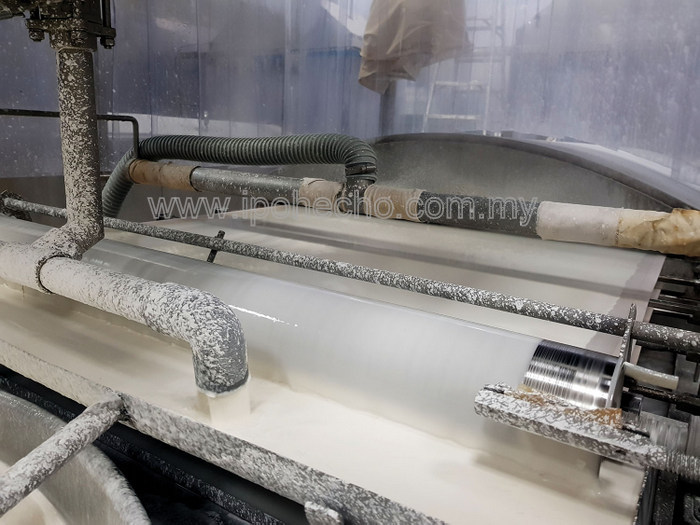

After a day or so, the washed raw rice is then ground to a fine powder and mixed with starch and water to become a white, thick rice solution.
According to Mecanique, the amount of starch determines the transparency of kueh teow.
“We prefer that our kueh teow be opaque because the higher the amount of starch, the more transparent kueh teow would be, and that also means lower rice content.
“Kueh teow with lower rice content, such as crystal kueh teow in Kuala Lumpur, does not give out the aromatic rice flavour as much as kueh teow with higher rice content would,” he said.
In comparison, kueh teow with higher starch content would be more chewy, while kueh teow with higher rice content would be softer to the bite.
The rice solution is then transferred to the steamer to cook, resulting in a layer of uncut, paper-like kueh teow.


The paper-like kueh teow are then brought to the slicing machine, where kueh teow are sliced according to width determined by different dish specifications and customers’ preferences.
“Our kueh teow’s widths range from 4mm to 22mm, which is about the size of a belt,” said Mecanique. “22mm kueh teow has two dish variations; cooked for kway chap (braised pork dish) and fried for tua pan (fried flat noodle).” he added.
After slicing, kueh teow are cut according to length requirements, which are then brought via conveyor into the packing machine.
Some of IKT’s products, like “Kueh Teow Soup”, has a red-coloured packaging, while “Kueh Teow Goreng”, has a dark-brown packaging.
Less and Less Producers
Fewer factories now produce kueh teow. Asked why, Mecanique answered, “Ipoh used to have 50 to 60 factories producing noodles, but they didn’t survive because either the owners gave up owing to old age or there were no successors willing to take on their businesses.”
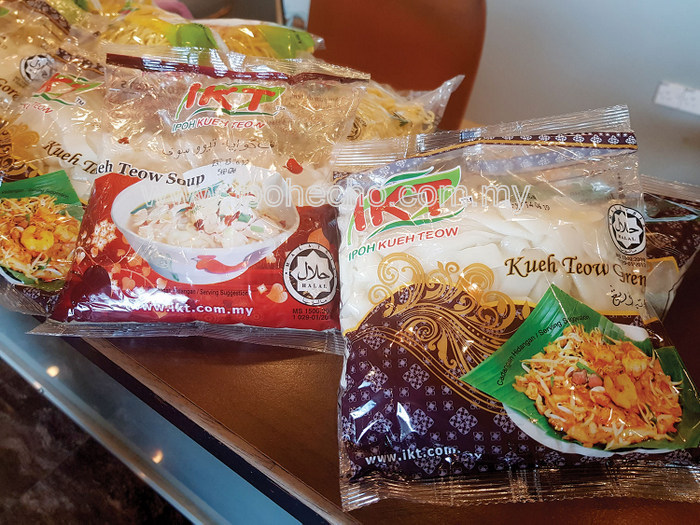

He stated that it is more economical and convenient for businesses to purchase kueh teow, rather than having the hassle to make their own.
“I chose to continue running IKT due to sentimental factors. My father was far-sighted. When he was deciding on the brand name, he chose to put ‘Ipoh’, instead of his name or our family surname and we realized that our company has flourished a lot and IKT became one of the many contributors to what makes Ipoh well-known,” Mecanique said.
Up till today, IKT revises the recipe for their kueh teow production, based on customers’ reviews.
“To be very honest, customers are our biggest contributor to the improvement of taste of our kueh teow,” he said. “A machine can manufacture many kinds of kueh teow, in terms of texture and costing, for example. But we only manufacture kueh teow which are most favoured by our customers.”
IKT has a rather huge customer base. There are about 1000 to 2000 independent hawkers in Ipoh itself.
Other than hawker stalls, they also deliver kueh teow to established outlets and hotels like Old Town White Coffee and Excelsior Hotel.
“We have customers with different preferences. Some want the kueh teow thin. Some want them smooth. Some are concerned with the length. Thus, the customers can be considered our primary testers,” Mecanique said.
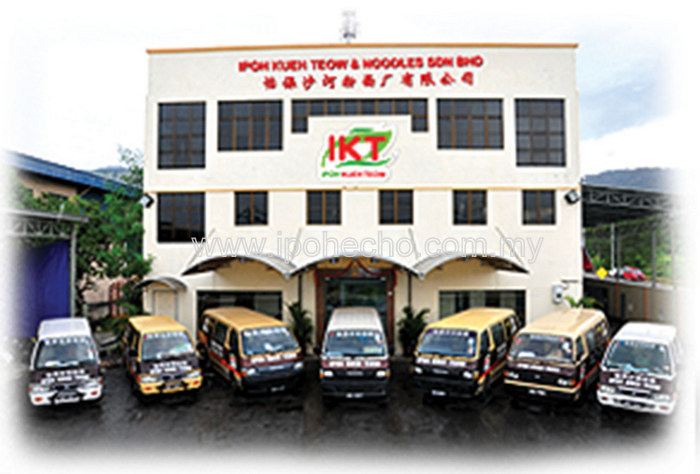

IKT earned its name not from advertisements, but from the word of mouth. A business like IKT does not come without their own challenges.
“Our biggest challenge in this business is the volume of sales. The process to manufacture a ton of kueh teow is very much different from having to produce a hundred tons of them, for example. Every step of the process is really crucial.
“Supply of materials, machine capacities, hygiene standards and most importantly, time to prepare the raw materials play a part in determining our capability to meet deadlines and expectations.
“We have to come up with solutions to ensure that we can finish manufacturing kueh teow on time,” he elaborated.
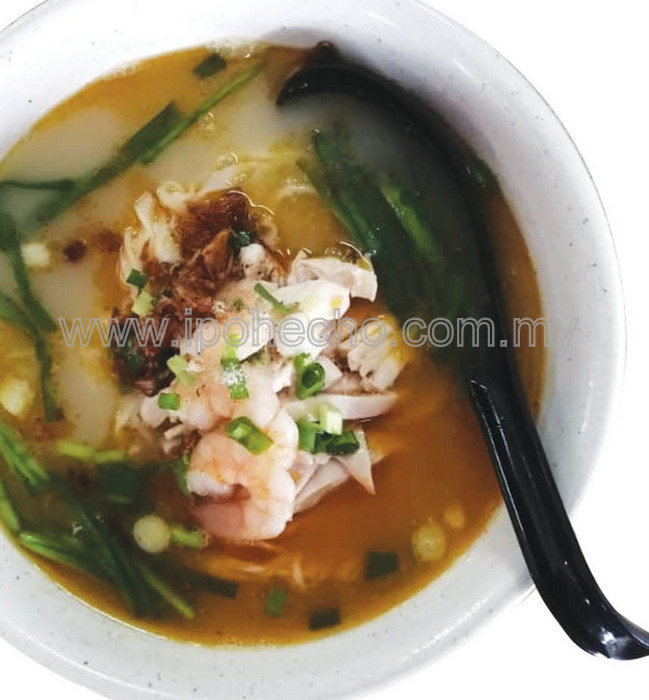

Food Vendors’ Opinions
Dato’ David Tan, who started and owns a chain of Little Katong stalls selling kai si hor fun, curry mee, Singapore laksa and chicken rice, orders special kueh teow from IKT and he says, “My stalls usually sells out of this special kai si hor fun by 9.30am. It is thinner and finer than the regular kueh teow and can only be served in soup.”
John Lee, 44, second generation of the Lees, who runs Yong Koy Beef Noodles in Ipoh Old Town, has been using IKT kueh teow for their business.
“I use IKT’s kueh teow because I have heard very good responses from other sellers and customers themselves. Normally, customers choose to have a mix of kueh teow with either yellow noodles or rice vermicelli,” he added.
The noodle business, which has been running for at least 40 years, gets around 10 packets of kueh teow delivered every day from IKT, depending on the day.
“During weekdays, we buy in lower volume. If it is public holidays or weekends, we buy a few more, just to be safe,” he said.
Ooi Yan Sheng, 26, chef and owner of Laksa Leaf Café, trusts the quality of IKT kueh teow. “IKT has been so established even before I was born, so of course I trust their quality of kueh teow.”
According to him, the kueh teow has a familiar taste to it, which greatly complements his dishes. “I feel very good about the noodle dishes I cook, but with IKT kueh teow, I feel much better! The texture is smooth and soft enough for my customers to slurp along with the soup,” he added.
Teh Lian Peng, 71, who sells har mee (prawn noodles) during weekends and public holidays, finds customers unexpectedly liking her prawn noodles with kueh teow from IKT more than usual.


“Sometimes, I get special requests from customers to have kueh teow in their bowl of prawn noodles,” she said. “Prawn noodles are usually ordered with mihun (rice vermicelli) or yellow noodles or a combination of them. I thought I misinterpreted that request, but when I tasted the combination of kueh teow and mihun or yellow noodles myself, I understood why,” explained Teh.
The aroma the kueh teow gives surprisingly matches the broth of prawn noodles she prepares a day earlier than business.
“The soft texture of kueh teow evens out the springiness of yellow noodles and blends greatly with mihun, which is why customers like my prawn noodles even more,” she added.
Consumers’ Opinions
Kenneth Chua, 50, fellow Ipohite currently residing in Kuala Lumpur and working as a salesman, finds IKT kueh teow from Ipoh much better tasting than in Kuala Lumpur.
“Perhaps it is the way vendors cook it in Ipoh, but I could not find any place offering even in the slightest, a better tasting kueh teow,” he mentioned.
Loh Ewe Chun, 26, fellow Ipohite who is working in Seremban, said that kueh teow dishes in Ipoh are something he does not need to introduce to his friends from other states.
“Kueh teow, no matter cooked or fried, is already so popular amongst my friends that all information regarding kueh teow eateries around Ipoh can already be found on the internet. Sometimes I find a few up and coming new places offering kueh teow too,” he explained.


Leong Meng Fai, 52, fellow Ipohite working as museum manager at Han Chin Pet Soo, views kueh teow as synonymous of Ipoh.
“I will recommend tourists flocking from other states or countries to try out various kueh teow dishes offered around town,” he said.
Most Ipohites agree that the smooth and soft texture of IKT kueh teow is what contributed to the popularity of Ipoh food.
“I feel that the porous texture of kueh teow greatly complements any dishes,” said Josephine Tan, 47, an Ipohite working as a stationery supplier.
Further explaining this point, she added, “Kueh teow is like a universal absorber of essence of any soup-based dishes. That is why I like to eat kueh teow with soup, kai si hor fun, particularly.”
And of course a word from our Ipoh Food Diva, SeeFoon who told me, “I have never had kueh teow as smooth as the ones in Ipoh. I like the thin cut ones, slurp worthy as it goes down your gullet, resilient, and with a spring in the bite. I would vote them the best in the world.”
Now that’s an accolade worth noting!
Ipoh Kueh Teow and Noodles Sdn Bhd
SD 2567, Lot 34144, 2½ Mile, Jalan Jelapang, 30020 Ipoh.
Tel: +605 529 1188
Fax: +605 529 1189
Website: www.ikt.com.my
Email: info@ikt.com.my
